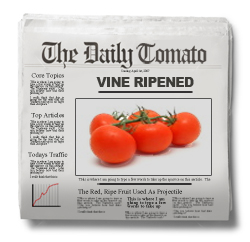
Category Organization Will Give Your Real Estate Blog
A Long And Successful Life.
Throw down 75 cents and pick up your local daily.
You are willing to invest in the pile of paper because you have an expectation of the value that it contains.
The format for most major city newspapers is predictable:
(Any combination of the following)
Front Page News
World News
Local News
Sports
Business
Lifestyle
Classified
with some Comics, Crossword, Horoscope and Television thrown in.
And on weekends, sprinkle in some of the following:
Real Estate
Travel
Cars
Tech
Food
Subscription is earned when readers recognize the value of your format and want to be afforded it regularly.
Improve your chances at subscription by having the discipline to develop clear and predictable divisions in your blog. Whatever you choose to maintain as your focus, whether it be Home Buying Advice, Local Events, Market Statistics etc., try to develop content that continues to fall under these categories. Breaking your current and future content into strong categories helps you develop a format which your readers:
Appreciate.
Develop an expectation of.
Clearly discern your focus and expertise.
Recognize the value of your effort.
All of which beg for subscription to your blog’s RSS feed/email blast.
Disorganized categories lead to confusion, clutter, and a loss of message… all of which prevent subscription.
Keep in mind, all your regular content doesn’t need to be rigid and overly focused on real estate topics, or predictable at all for that matter.
Just as newspapers expand their coverage on weekends to colorful comics, travel editorials and restaurant reviews, recognize that your blog’s offering of something ‘on the lighter side’ will keep your audience engaged.
A great example of this technique is illustrated by Tomato guest author, Teresa Boardman’s blog, St Paul Real Estate Blog. Teresa regularly shakes things us with her Friday Fun posts. Another fun example is Jay Thompson’s “Real Estate Photo Of The Week”.
The one rule I propose for your real estate blog categories is that only include categorical that you post content to regularly. If there will only ever be a few posts, at most, to the category, then do not display it as a major division of your content. Use your blog’s tag option for whimsical topics, and place the article under a category to covers it more generally.




